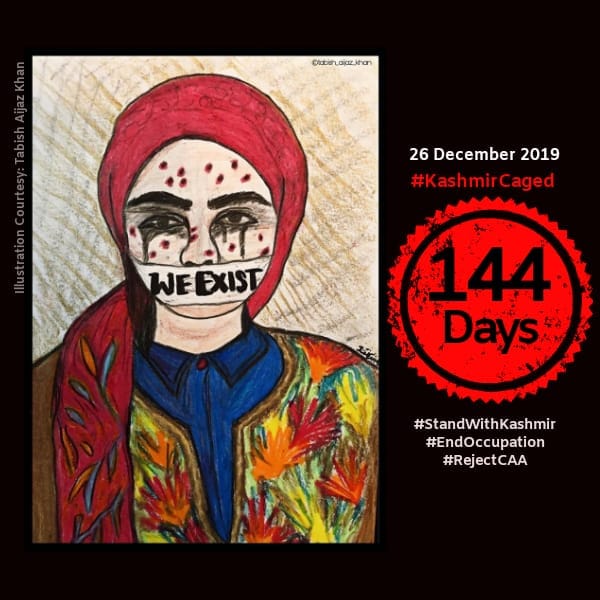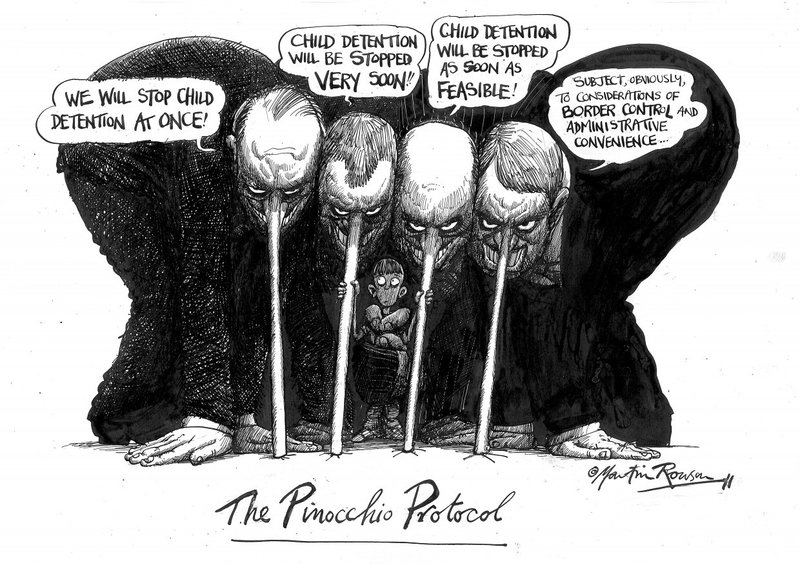
From Palestine to Kashmir, women are taking their space against occupation and patriarchy

Reversing decades of foreign policy tradition, Donald Trump announced the U.S. will recognize Jerusalem as Israel’s capital. In so doing, Trump fanned the flames of a region already embroiled in intense conflict. Muslim leaders from 57 countries condemned the decision, calling on the world to recognize “Palestine and East Jerusalem as its occupied capital.” Protests erupted worldwide in solidarity with the Palestinian nation, whose de-jure territories—Gaza, the West Bank, East Jerusalem, and Golan Heights—are treated as illegitimate by both Trump and Israel. Protests erupted within the walls of occupied Palestine following the pronouncement. In the West Bank, East Jerusalem, and Gaza, Palestinians are fighting the declaration, which they see as further legitimizing Israel’s apartheid takeover. Israel responded with its usual destructive military violence.
In colonized states, military violence is commonplace. Crackdowns, disappearances, violence, and intimidation are the norm. Palestine is no exception. Since 1948, Israel has routinely practiced human rights abuses in attempts to quell the Palestinian State. What do these crackdowns mean for the women of Palestine?
In 2010, journalist Freny Manecksha asked a similar question regarding Kashmir, a region occupied by Indian military police. For seven years, Manecksha collected and compiled dozens of first-hand accounts from women of Kashmir. She details how space is lost to women subjected to military violence.
Torture, rape, sexual violence, enforced disappearances, and extra-judicial killings are tools the Indian military police use to deny Kashmir political sovereignty. To women in Kashmir, crackdowns are synonymous with sexual violence. The once free-roaming, awe-inspiring hills of Kashmir have transformed into a cold, barbaric warning. Kashmir was once a land of mysticism. Its breathtaking natural landscape inspired poets like Habba Khatun to write of girls picking chinar leaves, of wandering spaces, and of the wild flowers that dotted the hillsides.
Those verses are reminders of a time of freedom stolen from women. Cold metal, tear gas, and military uniforms proliferate amongst the cities and trees. Mysticism was transformed into barbarism. Women are no longer free to gather violets – doing so risks sexual harassment, violence, or abduction. Privacy is lost. Riflemen “legally” barge into homes, smash pots and pans, take up common rooms, and destroy the sanctity of the home. Only in shrines do women find the sacred space “just to be.” Shrines serve as places of “secrets, fears, and angst”, places of “abreaction.” They are the last accessible places that allow women to release their emotions while offering an important “spiritual anchor.” They are the last spaces still reminiscent of Habba Khatun’s Kashmir.
In Palestine, women face a similar problem. Since 1948, the Israeli military has asserted its dominance through borders, checkpoints, and brute displays of force. Along with the military colonizing their spaces, Israeli developers have capitalized on the forced removal of Palestinian citizens. Old olive orchards, the source of income for many families, are now white, concrete eyesores. Checkpoints dictate how women maneuver through the land, deciding if they can access schools, hospitals, relatives: “Occupying the material space of the frontline, these women must often carry the burdens of the outcome of the fighting. These women survive both the daily assaults against their quotidian activities and the psychological warfare that is endemic to a militarized zone.”
Movement and security are luxuries. Like the women of Kashmir, Palestinian women find themselves suffocated by military occupation. They are without legal rights, government help, or societal help. Internalized colonization and the weaponization of their bodies has increased the strength of the patriarchy. Palestinian authorities view sexual abuse as a national issue—speaking about that abuse makes the woman complicit with the outside forces aimed at destroying the nation. More so, Palestine sees sexual violence as a direct confrontation with its honor. In the need to defend national honor from invaders, women who are sexually abused are treated as dishonorable, often ostracized from their communities.
This is colonialism, the occupation of space by an invader, and it is patriarchy, the need to assert dominance over a feminine body: “This is the point where two systems of subordination – occupation and patriarchy – converge in the Occupied Palestinian Territories: women in confronting the former submit to the latter.” War, conquest, and the hunger for land work in tandem with the worst types of oppression. Denial of state freedom is denial of women’s freedom.
Despite the reality of occupation, Palestine should have hope. In Kashmir, young women are actively fighting against both patriarchal and military occupation. Women like Essar Batool, Natasha Rather, Farhana Latief, and Inshah Malik question Kashmiri societal predispositions and how gender, sexuality, and freedom of expression are linked to the Azadi movement. These women promote a fiery new hope, recentering the activist conversation on those who most need Azadi—women. For them, it is not enough to have freedom from India. They demand freedom from patriarchy.
Palestinian women are also not backing down. Determined to “create their own meaning and build agency, sometimes literally from the nothingness around them; all the while being cognizant of their roots and history, they offer counter-discourses, counter-spaces, and counter-narratives.” They are taking their space by force, both within Palestine itself and in the greater activist movement.
In the words of feminist peace activist legislator Jihad Abu Zneid, “This is our country and we will save it. We will save our capital and our sovereignty here in Jerusalem.”

(Photo Credit 1: Al Jazeera / Mohammed Salem / Reuters) (Photo Credit 2: Women’s Media Center / Bilal Bahadur)
We don’t burn children anymore. We send them to prison.

Monday, November 21, 2011, must have been Juvenile (In)Justice Day. Juvenile (In)Justice appeared everywhere, in the news.
In Kashmir, there’s juvenile (in)justice. Children charged with throwing stones are treated, formally, as terrorists. They can be jailed, caged, for up to two years without a trial. Children are placed in adult prisons, while awaiting trial and when convicted. And they will be convicted. Yes, there are laws that protect juveniles. But those laws don’t matter in a state of emergency. Children don’t matter in a state of emergency. They aren’t `juveniles’, and they aren’t `youth’. They’re children.
The state of emergency, the so-called public safety crisis, is always an alibi. States abuse children. In Kashmir, there’s juvenile (in)Justice, and the excuse is crisis. In Malawi, where there is no state of emergency, juvenile (in)justice is simply business as usual, the price of maintaining order. The law says children under 18 deserve special treatment and protection. In fact, children are tried in adult courts and then sent to overcrowded adult prisons. That is the rule of law… everywhere. Take children and maximize their vulnerability.
And then lie about it.
That’s what the United Kingdom has been doing, systematically lying about the abuse of children of asylum seekers and, worse, of asylum seeker children. Sexual abuse. Other forms of physical abuse. Psychological abuse. Spiritual abuse. Of course, there are no laws that address the crimes of breaking the spirit of a child. What’s going on in the United Kingdom is not `merely’ officials lying. It’s Official Lying. The State defines democracy by lying and then chants, “This is what democracy looks like.”
“The ministers lie, the professors lie, the television lies, the priests lie. . . .
These lies mean that the country wants to die.”
And then finally, in the name of security, stability, sovereignty, and, of course, peace, the State, in this instance the United States, proposes a budget that would gorge on prisons and gouge youth of resources, of hope, of life itself. Again, the youth, the juveniles, they’re children.
Meanwhile, cities, like New York, work on plans to increase the use of solitary confinement. It’s called “punitive segregation”, and it preys in particular on `juveniles’, those prisoners living with mental disabilities, and those awaiting trial. Maximize vulnerability. It’s a kind of efficiency that brings education, mental health care, and justice itself to a screaming, screeching halt.
None of this is new or news, of course. The abuse of children in prison is systemic. In the United States, for example, photographer Richard Ross has been exposing juvenile (in)justice for years, and it’s everywhere. It’s the fabric of national democracy. It’s today’s version of burning children, as Robert Bly wrote, some four decades ago:
“But if one of those children came near that we have set on fire,
came toward you like a gray barn, walking,
you would howl like a wind tunnel in a hurricane,
you would tear at your shirt with blue hands,
you would drive over your own child’s wagon trying to back up,
the pupils of your eyes would go wild—
If a child came by burning, you would dance on a lawn,
trying to leap into the air, digging into your cheeks,
you would ram your head against the wall of your bedroom
like a bull penned too long in his moody pen—
If one of those children came toward me with both hands
in the air, fire rising along both elbows,
I would suddenly go back to my animal brain,
I would drop on all fours, screaming,
my vocal chords would turn blue, so would yours,
it would be two days before I could play with my own children again.”
The news Monday was this. We don’t burn children anymore. We send them to prison.
(Image Credit: Open Democracy)